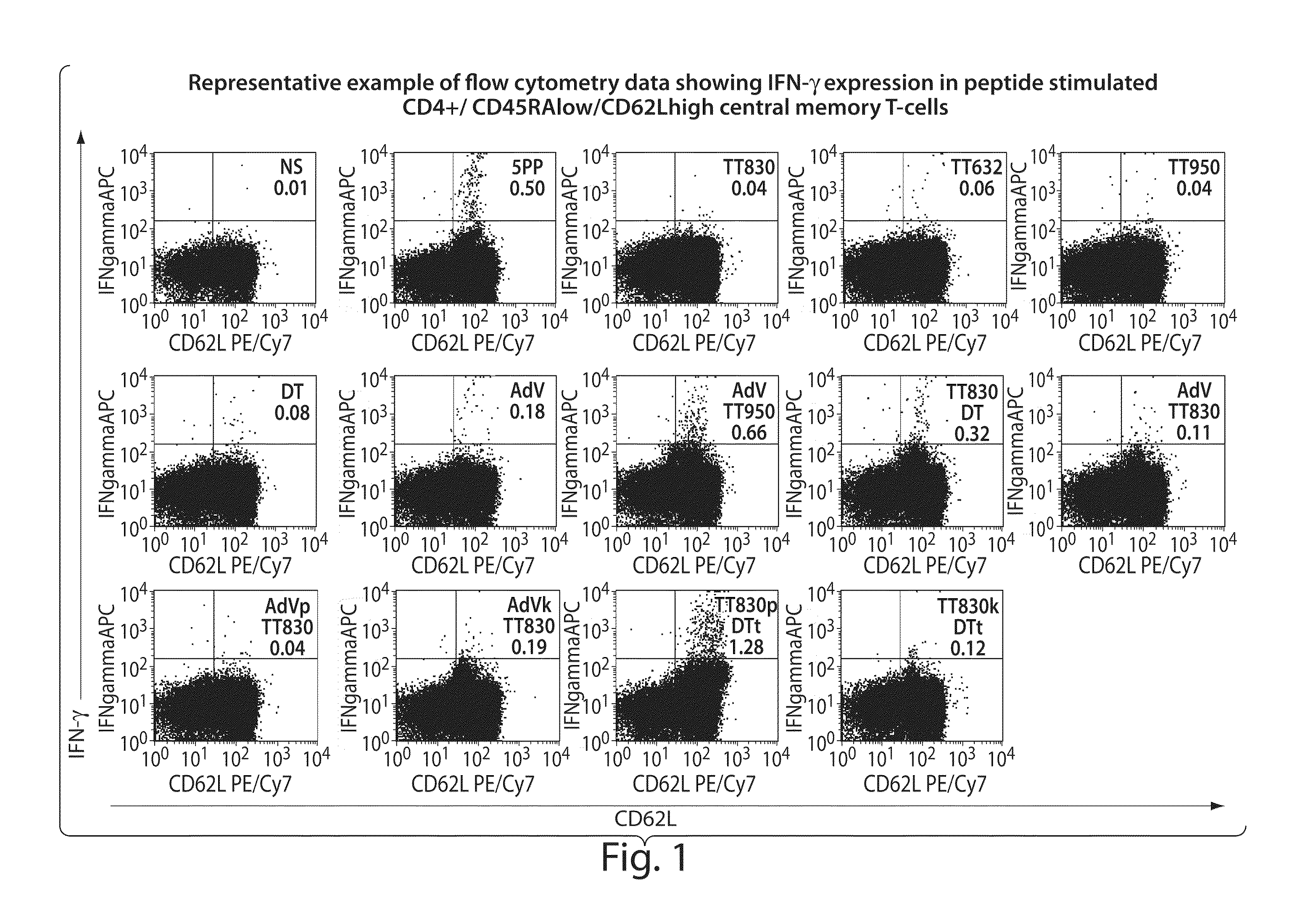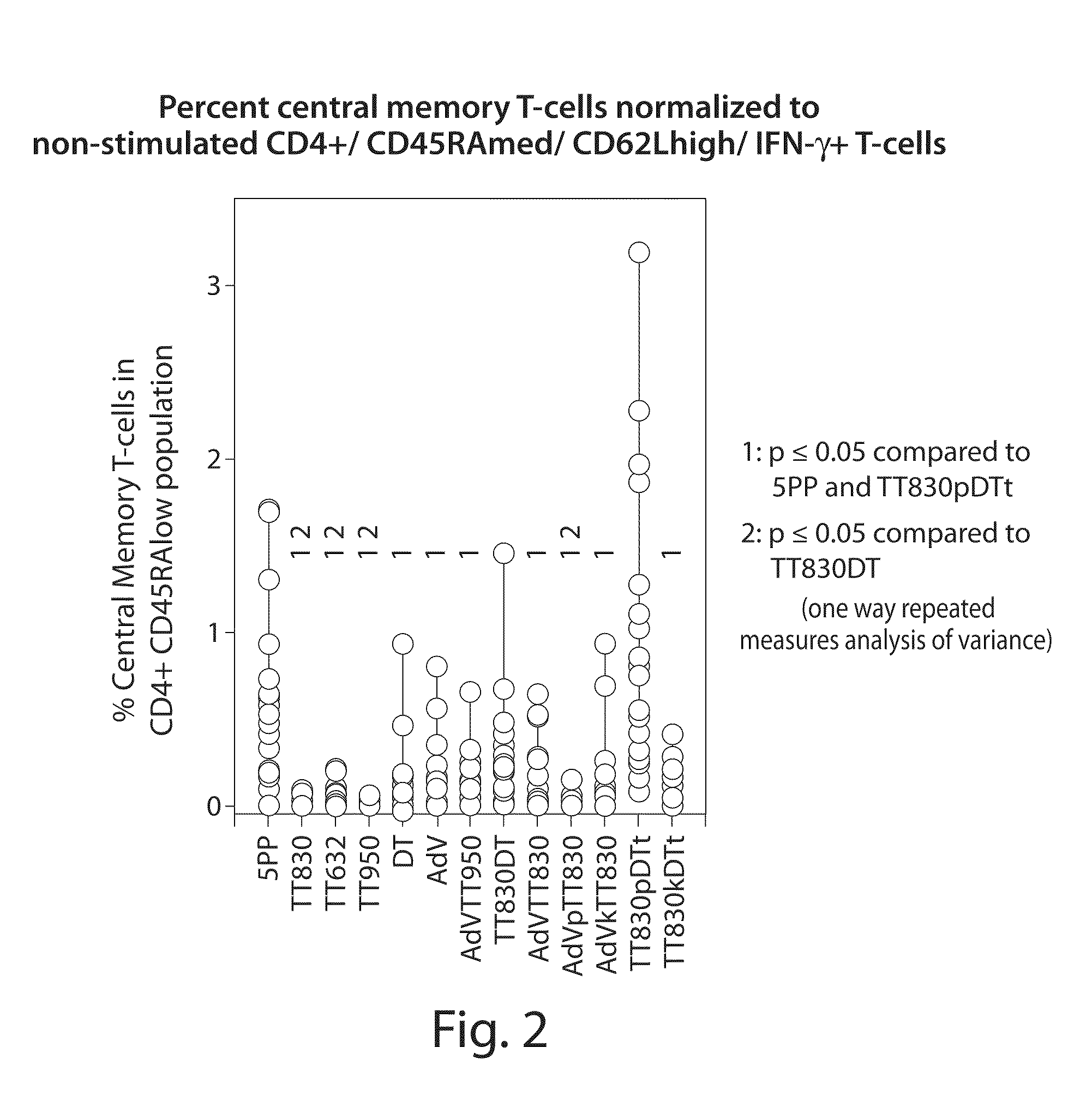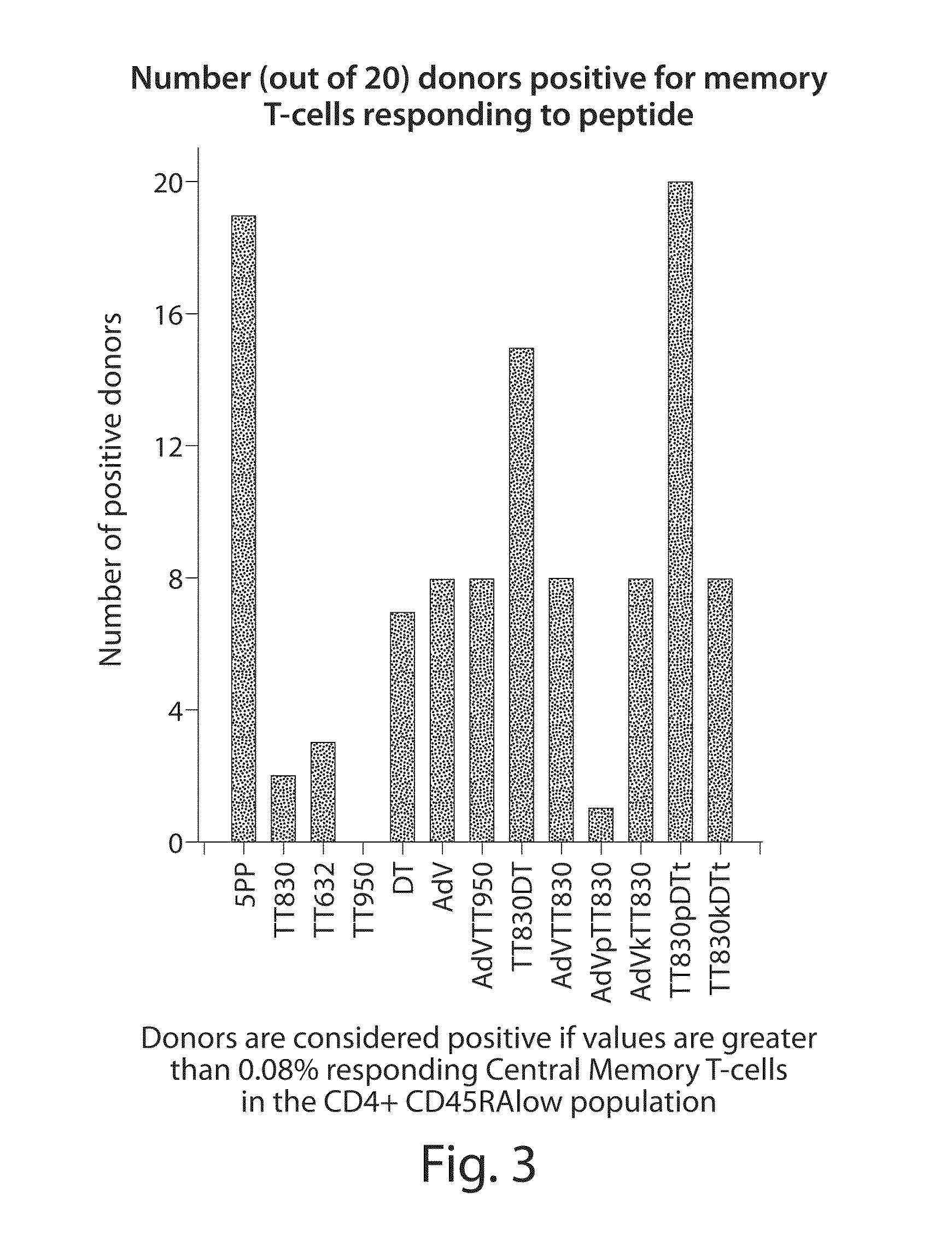Compositions that induce t cell help
a technology of t cell help and composition, applied in the field of compositions that induce t cell help, can solve the problem that the population of epitope is limited, and achieve the effect of reducing the risk of t cell death
- Summary
- Abstract
- Description
- Claims
- Application Information
AI Technical Summary
Benefits of technology
Problems solved by technology
Method used
Image
Examples
example 1
Generation of Universal Memory Peptides
[0155]In order to generate chimeric peptides, Class II epitope prediction was performed using the Immune Epitope Database (IEDB) (http: / / www.immuneepitope.orq / ) T cell epitope prediction tools. For each peptide, the prediction tool produces a percentile rank for each of three methods (ARB, SMM_align and Sturniolo). The ranking is generated by comparing the peptide's score against the scores of five million random 15 mers selected from SWISSPROT database. The median of the percentile ranks for the three methods is then used to generate the rank for consensus method. Peptides to be evaluated using the consensus method may be generated using sequences derived or obtained from various sources, including infectious organisms capable of infecting humans and generating human CD4+ memory cells specific to that infectious organism following the initiation of the infection. Examples of such infectious organisms have been noted elsewhere herein.
[0156]In a...
example 2
Core Amino Acid Sequence Evaluation
[0159]Both HLA-DP and HLA-DR specific epitopes have been evaluated for core binding epitopes by truncation analysis (1, 2). Core amino acid sequences selective for a specific HLA-class II protein have been found in common in several epitopes. An example of this are common core binding structures that have been identified which constitute a supertype of peptide binding specificity for HLA-DP4 (3). It is likely that these core amino acids maintain a structural configuration that allows high affinity binding. As a result it is possible to substitute non-core region amino acids with similar chemical properties without inhibiting the ability to bind to Class II (4). This can be shown experimentally using substitutional analysis and then epitope binding prediction programs. In order to perform the analysis individual amino acid substitutions were introduced, and the predicted affinity binding to Class II determined using the IEDB T-cell binding predictio...
example 3
Peptide Evaluation
[0166]Inventive compositions comprising chimeric epitope peptides were evaluated for (1) potency of recall response; (2) the frequency of recall response against a random population sample population (N=20); and (3) the frequency of antigen-specific memory T-cells within individuals (N=20).
[0167]The potency of single epitopes and chimeric epitopes were evaluated by stimulating human PBMC with peptides in vitro for 24 hours and then analyzing the cells by flow cytometry. Activated CD4 central memory T-cells have the phenotype: CD4+ CD45RAlow CD62L+ IFN-γ+. To estimate the frequency in the population of specific recall responses to selected epitopes, 20 peripheral blood donors were evaluated for induction of cytokine expression.
[0168]Briefly, whole blood was obtained from Research Blood Components (Cambridge). Blood was diluted 1:1 in phosphate buffered saline (PBS) and then 35 mL overlaid on top of 12 mLs ficoll-paque premium (GE Healthcare) in a 50 mL tube. Tubes w...
PUM
| Property | Measurement | Unit |
|---|---|---|
| Fraction | aaaaa | aaaaa |
| Fraction | aaaaa | aaaaa |
| Fraction | aaaaa | aaaaa |
Abstract
Description
Claims
Application Information
 Login to View More
Login to View More - R&D
- Intellectual Property
- Life Sciences
- Materials
- Tech Scout
- Unparalleled Data Quality
- Higher Quality Content
- 60% Fewer Hallucinations
Browse by: Latest US Patents, China's latest patents, Technical Efficacy Thesaurus, Application Domain, Technology Topic, Popular Technical Reports.
© 2025 PatSnap. All rights reserved.Legal|Privacy policy|Modern Slavery Act Transparency Statement|Sitemap|About US| Contact US: help@patsnap.com



